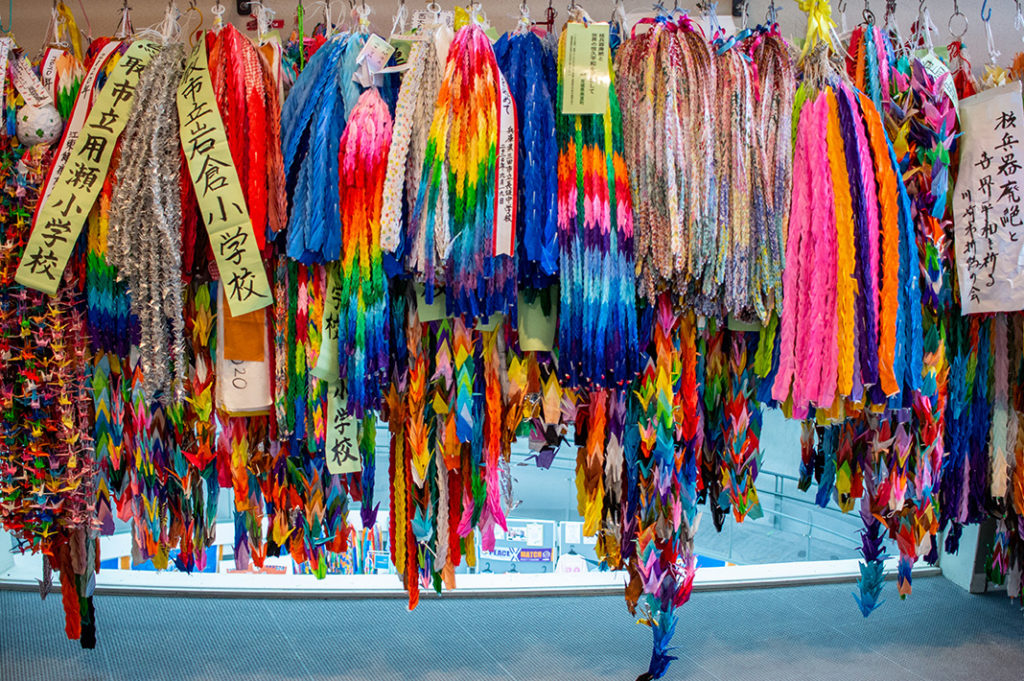
The atomic bombing of Hiroshima is a defining moment of World War 2, and perhaps what many associate with Japan during that time. However, it can’t be forgotten that three days later, on August 9th, 1945, while the world was still coming to terms with this frightening new reality, a second, more powerful, bomb was dropped on Nagasaki. Tens of thousands more innocent lives were lost, with even more to follow in the coming days, weeks, months and years. Over seventy-five years later, the concept and realities of nuclear warfare are still as unfathomable and horrifying as ever but deserve our attention nonetheless. For this reason, a visit to The Nagasaki Atomic Bomb Museum is absolutely essential.
The Nagasaki Atomic Bomb Museum
Located near the hypocenter of the bomb, the Nagasaki Atomic Bomb Museum was built to honour and remember the victims and advocate for the end of nuclear warfare. Over three dimly lit and saddening levels, the museum presents the chronology of events, starting with a picture of life in Nagasaki before the bombing.
An industrial port city, Nagasaki was important to the war efforts, hence the reason it was targeted. Suddenly—as suddenly as actual events, I’m sure—you are confronted with mangled and melted items like fused rosary beads, a warped water tower and plenty of tattered belongings recovered from the corpses among the wreckage.
The ‘Fat Man’
After moving through the first room, you turn a corner into a larger space only to be confronted by a full-sized replica of the “Fat Man” bomb, the elephant in the room, the raison d’etre. After seeing the devastation it caused, even though it missed the target and did less damage than intended, it’s hard to look at. To the military, Nagasaki was the second-best strategic option for the second of a series of planned bombings, but to tens of thousands of locals, it was their everything.
The human loss
Of course, the most shocking part of this attraction are the human stories played out in images, quotes and on the audio guide. Through the tales of the Hibakusha (survivors of an atomic bomb blast), you get a sense of the shock, confusion and of the horrific wasteland in which they came to exist. It is said that 35-40,000 people died outright, mostly civilians, but the number almost doubled over the next few months as people succumbed to illness and injury. Those who happened to be wearing light colours, had covered skin or were protected by concrete buildings at 11:02 am lasted longer than most, if only to serve as a study on the effects of radiation.
Say no to nukes
One of the last sections of the museum is about the development and current status of nuclear weapons around the world. While there is a global movement to disarm all nuclear weapons, many still exist and are feared to be bigger and badder than ever. This further instils the desire to see the end of nuclear weaponry and encourage the many organisations fighting for this goal.
Nagasaki National Peace Memorial Hall
After examining the gifted paper cranes, follow signs to the adjacent building, the ‘Nagasaki National Peace Memorial Hall.’ This beautifully constructed space is quiet and sombre and serves as a place to commemorate the victims and offer prayers of peace.
Final thoughts
With the initial massive loss of life and the slow loss of survivors over time, there aren’t many alive who can talk about their first-hand experiences. That’s why places like the Nagasaki Atomic Bomb Museum—and the Hiroshima Peace Memorial Museum—are so important. Their existence helps to ensure we of future generations never forget this awful occurrence and never let it happen again. Perhaps this is why they saved one of the most haunting images—a portrait of a boy bringing his deceased baby brother to the crematorium—for the end. To make sure we carry the outrage in our hearts forever.
Accessing the Nagasaki Atomic Bomb Museum
The Nagasaki Atomic Bomb Museum is located a few minutes’ walk from a tram stop, making it easy to reach from the city. If you are coming from the Nagasaki Station area, take tram #1 or #3 bound for Akasako and get off at the ‘Atomic Bomb Museum (Hamamachi-guchi)’ stop. If you are coming from the airport, you can catch an Airport Limousine Bus bound for Nagasaki Station (via Showmachi/Sumiyoshi) from Platform 4 to the ‘Hamaguchi-Machi’ stop.
Entrance to the exhibit costs a mere 200 yen for adults, and an audio guide costs an additional 157 yen.
Name: Nagasaki Atomic Bomb Museum
Address: 7-8 Hiranomachi, Nagasaki, 852-8117
Open: 8:30 am until 5:30 pm (until 6:30 May-Aug and 8 pm around the anniversary)
URL: https://nabmuseum.jp/
Post by Japan Journeys.